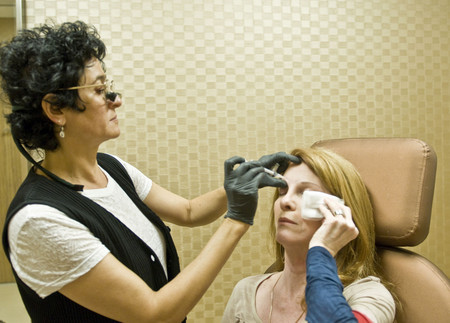Women now willing to discuss cosmetic injectables

Charlotte McLachlan met a casual acquaintance for coffee four weeks ago when she found herself in the middle of a familiar conversation. "She said to me, ‘You look great. What have you done?’ " recalls the 54-year-old. That’s when McLachlan began "mapping" out her face.
She started with the temples then moved to the area between her brows. Next came the outer corners of her eyes and then the skin that folds when she smiles. And down she went, citing such cosmetic treatments as Radiesse, Juvederm, Perlane, Restylane and Sculptra.
Like that, her casual acquaintance was promoted to friend status.
McLachlan’s willingness to discuss her cosmetic injectables isn’t uncommon. According to a survey conducted by The Aesthetic Surgery Education & Research Foundation, close to nine out of 10 respondents make no qualms of discussing their Botox and hyaluronic acid dermal fillers with people.
Most doctors attribute the openness to the popularity of these treatments. Affordability and accessibility have contributed to the fact that many women now view injectables as one more item on their cosmetic maintenance checklist. It’s usually somewhere between highlights and a full day at the spa.
Dr. Andrea Fong noticed a real shift in the last year and a half from patients keeping it on the down low to them volunteering the low down on injectables. It’s so acceptable, Fong hosts Botox parties at her DermaTherapy office in Summerlin every six months.
"You’ll always have that population that wants to keep their secrets, though," she says.
For Fong, she’s noticed a trend among her "cougar" patients to keep tight lipped about their treatments. They make an effort to appear youthful, but don’t want people to know the effort is necessary.
Dr. Goesel Anson of Anson Higgins Plastic Surgery says her patients who still prefer to hide their work fall into an older demographic. "A lot of ladies in their 70s are still holding onto old notions of feeling embarrassed about caring about their appearance," she says.
Other than that, the private entrance at Anson’s offices rarely gets used anymore. Her patient, Marsha Collins, never knew such an entrance existed. The 58-year-old comes in every six months for Botox without a care in the world for who sees her there. She explains this as Anson injects the area between her brows and doesn’t so much as blink. "This is a piece of cake," she says.
Collins has only once felt negative repercussions from making her face an open book. It happened at a dinner party and came down to good old fashioned envy. A naysaying friend introduced her to a gentleman who told Collins she was pretty. The friend then announced exactly how she got that way. A few months after accepting an apology, Collins got a call from the same woman asking for her doctor’s number.
The only downfall Anson has seen result from talking about treatments is the overdone look. You know it when you see it. The Madame Tussauds face that requires women to announce their emotions rather than facially express them. For most, this results from a distorted image, but for some it comes down to wearing their income on their face.
"There’s a small group that has an ‘I can do whatever I want because I have disposable income’ (mentality)," Anson says.
The majority of women using injectables for age intervention these days do so to stay competitive in their professional lives. This explains why the recession brought an increase of such treatments. Before an interview older job candidates will cover their gray, buy a new suit and — these days — iron out their wrinkles. Whatever makes them sit up straighter and shine a little brighter.
Then you have women such as Collins, a retired artist, who just wants to feel good when she looks in the mirror. "It’s my life," she says. "I want to keep myself looking as good as I can for as long as I can."